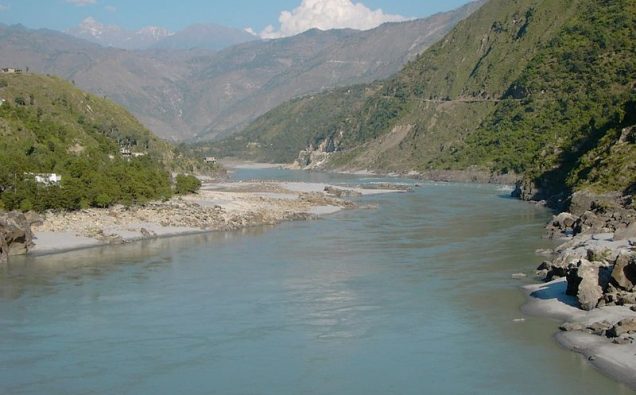
If business-as-usual continues in the realm of water management, some regions of the world will lose up to 6 percent of their GDP, and water shortages will spark conflict and trigger wide-scale migration of population, a new World Bank report warns
As climatic changes make water supply more erratic and uncertain, growing population, rising incomes and expanding cities will together cause major spike in demand and leading to disastrous consequences for some regions, , according to the report: “High and Dry: Climate Change, Water and the Economy”.
Home to nearly one-fourth of the world population, South Asia is among the regions dangerously exposed to risks of water scarcity as large contribution of irrigated agriculture to food production and rural economies makes it highly vulnerable to predicted changes and the possible consequences, according to the report.
While the report merits immediate attention of policy makers in regions most susceptible to water scarcity – Southeast Asia, East Africa, Central and West Africa, Northeast Eurasia and South American – stakes are higher when it comes to South Asia.
India and Pakistan, South Asia’s biggest economies, have confronted disputes over water sinces their simultaneous births in 194 7 from British-ruled Indian sub-continent. A water accord, brokered by the World Bank has held ground since 1960, avoiding any major conflicts between the uneasy neighbors.
But, failure to resolve their political and territorial disputes has spillover effects on the water-sharing accord, known as the Indus Water Treaty. In recent years, both countries have approached the Court of Arbitration in The Hague, over the Kishan Ganga Hydro-Electric Project by India on the Neelum River.
While in any other part of the world, dispute over water may be seen as serious but not dangerous, such a conflict between Pakistan and India entails catastrophic implications, given their intense political rivalry and the fact that both are now nuclear nations.
Security experts have long feared South Asia as a nuclear flashpoint, mainly due to longstanding Jammu and Kashmir conflict and the risk that the highly militarized disputed Himalayan territory – a source of water – poses.
The latest World Bank report should, therefore, serve as an eye-opener for policy makers in the two countries in particular and those in other vulnerable regions in general to pay serious attention to the problem of water scarcity.
If required actions are not taken, the report warned that water will become scarce in regions with abundance water resources – such as Central Africa and East Asia – and the situation would worsen in area already facing short supplies, such as the Middle East and the Sahel in Africa..
According to the report, these regions could see their economic growth plunge by as much as 6 percent by 2050. Reduced fresh water availability and competition from other uses – energy and agriculture – could reduce water availability in cities by as much as two thirds by 2050, compared to 2015 levels.
The gap in supply and demand will exacerbate already severe stresses on water resources in many regions. Virtually the whole of South Asia, the Middle East, and North Africa, exist in a state of near-permanent water stress, according to the report.
About 4 billion people, or 60 percent of the world’s populations, resides in these basins. “Such stresses are clearly unsustainable and in the long run would threaten the integrity and productivity of aquatic ecosystems.
The report also warns that water insecurity could multiply the risk of conflict in areas where the economies are depended on rainfall. In such regions, spike in food prices can easily inflame latent conflicts and migration. Episodes of droughts and floods have generated waves of migration and spikes in violence within countries in such regions.
Sub Saharan Africa presents the strongest evidence where civil wars tend to erupt following periods of low rainfall, the report says. In rural Brazil, land invasions are more common during drier years with more intense conflict in areas where land ownership is more unequal.
Within the next three decades, water demand for agriculture could rise by 50 percent and for urban uses by between 50-70 percent, the report estimates. The energy sector is projected to consume 85 percent more water by 2035, which could create new strains and lead to unprecedented conflicts between different water users, the report warned.
The report calls for far-reaching policies to avoid inefficient water use. Similarly, strong policies and reforms are needed to cope with deepening climate stresses. These include better planning for water resource allocation, adoption of incentives to increase water efficiency, and investments in infrastructure for more secure water supplies and availability.
“There is a silver lining,” said the report’s author and a World Bank Lead Economist, Richard Damania. “When governments respond to water shortages by boosting efficiency and allocating even 25 percent of water to more highly-valued uses, losses decline dramatically and for some regions may even vanish.
“Improved water stewardship pays high economic dividends,” Damania said.












